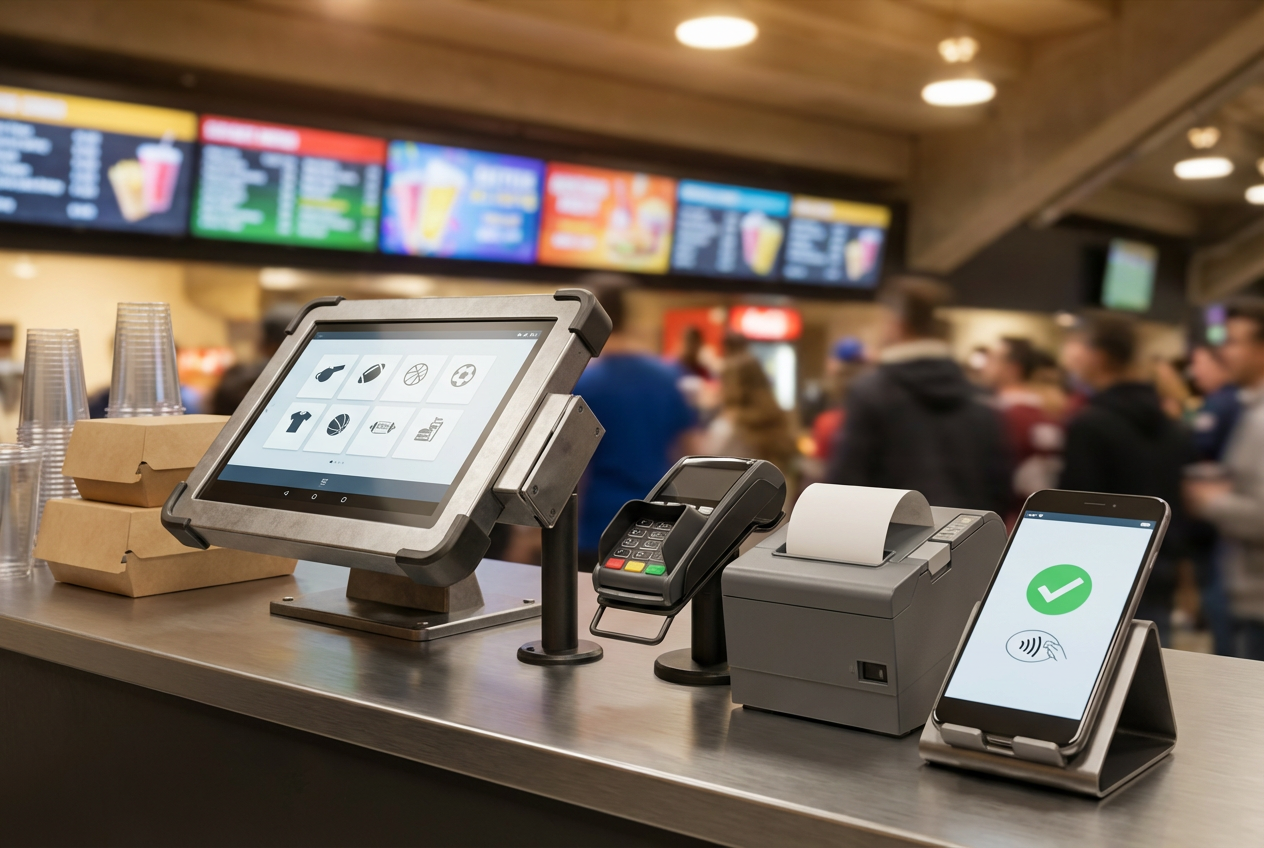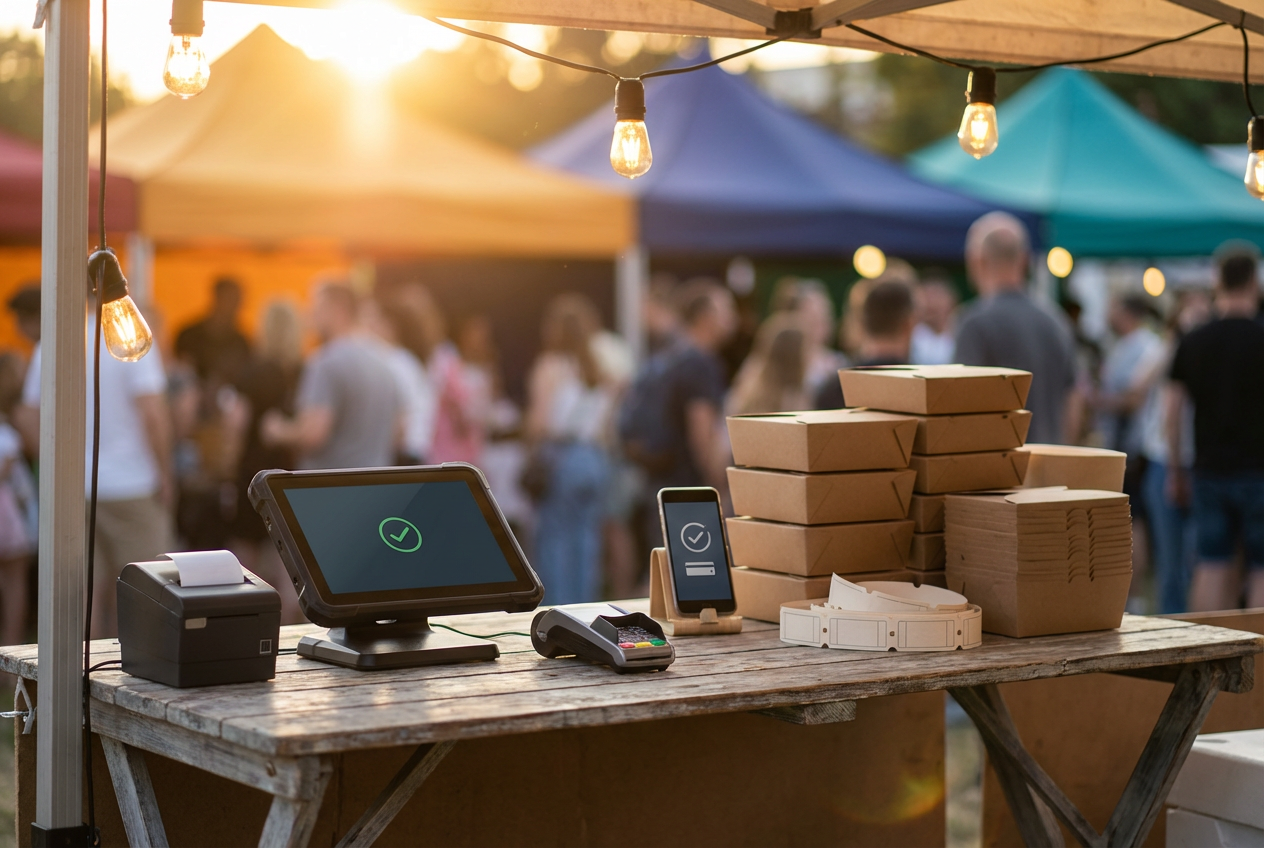Thailand’s vibrant fashion retail scene is growing rapidly, and businesses need smart, efficient tools to keep up with customer expectations and market trends. A tailored fashion POS Thailand system can do just that, helping retailers manage inventory, process sales quickly, and deliver a smooth shopping experience both in-store and online.
In this in-depth guide, we explore the key components, setup process, and best practices for implementing a successful fashion POS system in Thailand, with insights from ConnectPOS to help you stay ahead of the curve.
Highlight:
- You should choose a POS system that aligns with your business size, supports integration with your current tools, and can scale as your store expands.
- Before setting up your POS, define your business goals, list the key features you need, and identify which platforms or tools it must connect with.
- To get started, install the POS system, add your product inventory, and make sure your team is trained to use it confidently.
The Importance of Fashion POS Thailand
The retail environment in Thailand has evolved into a dynamic, omnichannel marketplace where inventory accuracy, smooth transactions, and real-time insights are the backbone of success. A flexible fashion POS Thailand system provides:
- Improved inventory accuracy and stock level tracking
- Streamlined checkout processes for higher customer satisfaction
- Integrated CRM tools for loyalty-building
- Real-time data access for informed business decisions
- Support for multi-location stores and online platforms
Key Components of a Fashion POS System
Every efficient fashion store relies on a feature-rich POS system that covers all operational needs. We’ll provide a breakdown of the components that define a robust fashion POS setup in Thailand.
- Inventory Management
In fashion retail, where products vary by size, color, and style, the system must support SKU-level tracking. It should offer tools to scan barcodes or RFID tags, automatically alert staff when stock is low, and optimize purchasing through supplier management features and built-in purchase order creation.
- Sales Tracking
A good POS system gives store owners visibility into what’s selling and what’s not, breaking down performance by product, employee, or branch. It should log returns, exchanges, and discounts while also identifying high-traffic hours and seasonal sales trends.
- Customer Relationship Management (CRM POS)
To build customer loyalty and drive repeat business, your POS should include an integrated Customer Relationship Management (CRM) system. This means capturing and storing customer data, tracking their shopping habits, and creating personalized experiences through loyalty programs or gift cards.
- Payment Processing
With the diversity of Thailand’s payment landscape, modern payment processing capabilities are a must. A fashion POS Thailand should handle multiple payment methods, including cash, credit cards, mobile wallets, QR codes (e.g., PromptPay), and even split payments.
Strong reporting and analytics features allow retailers to turn raw data into actionable insights. Managers should be able to track key performance indicators, such as revenue, profit margins, average basket size, and inventory turnover.
- Omnichannel Integration
Today’s customers expect consistent experiences across online and offline touchpoints. POS systems must integrate with eCommerce platforms, enabling centralized inventory, unified promotions, and click-and-collect or ship-from-store options.
►►► Optimal solution set for businesses: Multi store POS, Next-gen POS, Inventory Management Software (MSI), Self Service, Automation, Backorders
- Seasonality and Promotions
Fashion is highly seasonal. A good POS enables easy creation of promotions, discounts, and sales events. It should also allow scheduling of campaigns and tracking their effectiveness to refine future strategies.
- Mobile and Cloud-Based Access
Cloud-based POS systems offer real-time data access from anywhere. Mobile functionality empowers sales associates to assist customers directly on the floor, improving engagement and speeding up the buying process.
Factors to Consider When Choosing the A Fashion POS System in Thailand
When selecting a fashion POS Thailand system for a business, consider factors like
- Business Size and Type
The ideal POS system should align with the scale and complexity of your operation. A small boutique might need a simple setup, while a multi-location fashion chain will require advanced features. Think about the number of products and their variations (sizes, colors, styles), the size of your team, and how much training your staff may need.
- Budget Constraints
Budget is always a significant consideration. Look beyond just the monthly subscription fees and factor in the full cost of ownership. This includes the initial setup, hardware such as barcode scanners or receipt printers, and ongoing software licensing, if it’s not a SaaS model. Many POS providers offer flexible pricing tiers, so compare what’s included at each level to find the best value for your budget.
- User-Friendliness
Your POS system should be easy to learn and operate, especially in a fast-paced retail environment. A clean, intuitive interface helps reduce training time and improves staff productivity. Look for touchscreen compatibility, a logical layout for sales and inventory functions, and multi-language support, particularly Thai and English for seamless use in Thailand’s diverse retail workforce.
- Integration with Other Systems
To keep operations running smoothly, your POS should integrate effortlessly with the other tools you already use. This includes accounting software such as Xero or QuickBooks, e-commerce platforms like Shopify POS, WooCommerce POS, or Magento POS, and marketing tools for loyalty programs, email marketing, and SMS campaigns. Integration decreases manual work and guarantees that all your systems are aligned.
- Scalability
Choose a fashion POS Thailand that can grow with your business. Even if you’re starting with one store, it’s smart to invest in a solution that supports expansion. Look for features like multi-store management, modular add-ons that let you upgrade functionality as needed, and API access so you can connect third-party applications when the time comes.
Ultimate Guide to Set Up Your Fashion POS System
Now, we’ll look into the step-by-step process to set up a fashion POS in Thailand:
Pre-Setup Considerations
Before you begin installing any software or purchasing hardware, take time to evaluate your business’s unique operational needs. This foundation ensures that the POS system you choose and how you configure it truly support your retail goals.
Key areas to clarify include:
- Business Objectives: Are you looking to reduce checkout time, manage complex inventory, improve customer loyalty, or unify online and offline sales?
- Core Functional Needs: Identify must-have features for example, variant-based inventory tracking, integration with eCommerce platforms, or built-in CRM.
- Integration Priorities: Consider what systems (e.g., accounting tools like ConnectPOS, eCommerce platforms like Shopify, or loyalty apps) must be connected to your POS.
Step-by-Step Setup Process
To set up your fashion POS Thailand, your business need to follow these steps:
Step 1: Installing the Software
Once your hardware is ready, install the POS software:
- Download the application on all sales terminals or devices.
- Log in using your admin credentials provided by the vendor.
- Set up your store profile, including business name, logo, currency (Thai Baht – THB), time zone (ICT), and operating hours.
Double-check regional settings to ensure tax and payment processing comply with Thai business requirements.
Step 2: Configuring Settings
Proper configuration ensures the POS reflects your store’s operational structure:
- Tax Configuration: Set up Thailand’s standard 7% VAT, including tax-included/excluded display preferences.
- Payment Setup: Enable accepted payment methods (cash, credit card, PromptPay, mobile wallets).
- Bank & Gateway Integration: Connect your POS to payment gateways or merchant accounts for card processing.
- User Roles & Permissions: Define who can access which parts of the system, e.g., cashiers, managers, inventory staff.
Step 3: Adding Inventory
Fashion retailers typically manage products with variations (e.g., size, color, fabric). The POS system should support this complexity:
- Import Inventory: Upload product data via CSV file or enter items manually.
- Create Product Categories: Organize by type (e.g., tops, dresses, shoes), brand, or collection.
- Assign SKUs and Barcodes: Ensure every variant is easily scannable.
- Add Product Images: For easy lookup and better in-store visibility.
- Set Stock Levels & Reorder Points: Automate alerts when items fall below a specific quantity.
- Supplier Information: Link each product to its vendor for streamlined purchasing and replenishment.
Step 4: Setting Up Payment Methods
Align your POS system with how Thai customers prefer to pay:
- Connect to external payment terminals or integrated processors.
- Enable PromptPay QR code payments and top mobile wallets like TrueMoney or LINE Pay.
- Activate features for split payments, partial payments, or store credit usage.
- Test each payment method for accuracy and receipt printing.
Training Staff on the New System
Even the best POS system fails without proper onboarding. Invest time in staff training so every team member is confident and efficient.
Focus on:
- Daily Task Practice: Allow staff to simulate transactions, refunds, and returns in realistic scenarios.
- POS Manual: Provide a bilingual (Thai/English) guide tailored to your store setup.
- Troubleshooting Guidance: Cover common issues like payment failures or inventory mismatches.
- Managerial Functions: Train supervisors to access reports, manage users, and adjust settings.
Consider a phased rollout starting with one store or shift before full deployment.
ConnectPOS – Ideal POS for Fashion in Thailand
ConnectPOS is among the leading POS solutions designed to meet the unique demands of modern apparel businesses. Robust tools for managing product variations and enabling smooth omnichannel operations help fashion retailers stay flexible, informed, and focused on customer satisfaction.
- Variant-Based Inventory Management: Fashion businesses deal with complex inventory, with multiple sizes, colors, and styles for each product. ConnectPOS handles SKU-level tracking flawlessly, enabling you to manage thousands of product variants with ease and clarity. Add barcodes, images, reorder points, and supplier info to keep inventory under control at all times.
- Real-Time Synchronization with eCommerce: Whether you sell in-store or through platforms like Shopify, WooCommerce, or Magento, ConnectPOS ensures real-time syncing between online and offline channels. No more overselling or stock discrepancies, customers always see accurate availability.
- Multi-Payment Compatibility for Thai Shoppers: ConnectPOS supports all major Thai payment options, including PromptPay QR code, mobile wallets, credit cards, and cash. You can even set up split payments or partial deposits, ideal for high-ticket items or promotions.
- Offline Mode for Uninterrupted Sales: Internet hiccups? No problem. ConnectPOS continues to function smoothly, even offline, by storing data locally and syncing once the connection is restored. This is particularly significant for Thailand’s retail locations, which often experience inconsistent connectivity.
FAQs: Fashion POS Thailand
- What is the cost of a fashion POS system in Thailand?
Prices range from ฿1,500 to ฿5,000 per month for cloud-based POS. Costs depend on features, support, and number of outlets.
- What’s the best POS for small fashion boutiques?
ConnectPOS offers affordable, scalable plans with easy onboarding for small stores. Its intuitive design and variant support are ideal for fashion.
- Can I integrate my POS with Shopee or Lazada?
Yes. Leading POS systems like ConnectPOS offer direct integration with Shopee, Lazada, and other Thai marketplaces for seamless selling and syncing.
Conclusion
Adopting a smart, scalable fashion POS Thailand system helps retailers automate their operations, personalize customer service, and stay ahead of retail trends. From inventory control to real-time data access, every feature of a quality POS system aligns with the fast-moving demands of Thai fashion retail.
ConnectPOS stands as a top contender, trusted by local and international brands for delivering tailored, omnichannel POS experiences in Thailand.
Ready to transform your store? Contact us and book a demo today.
►►► Optimal solution set for businesses: Shopify POS, Magento POS, BigCommerce POS, WooCommerce POS, NetSuite POS, E-Commerce POS



